Occupational Environment Monitoring at the Coffin Manufacturing Plant
99,000 ₫
Note: The above price is calculated for one sample, and the price may vary depending on the area of the environment to be monitored and market fluctuations. For more accurate pricing support, please refer to the quotation table or contact our consulting staff directly.
Occupational environment monitoring at a coffin manufacturing plant is a process of collecting, analyzing, and evaluating workplace factors that may harm workers’ health.
Table of Contents
Toggle1. Overview of Coffin Manufacturing Factories
a. What is a coffin manufacturing factory?
Coffin manufacturing factories are facilities specialized in producing and processing coffins or containers for deceased bodies. Coffins are special products used in funeral and burial ceremonies to hold and bury the deceased. These factories usually have production lines and specialized machinery used to process and shape coffins according to design models and customer requirements.

b. Production stages in coffin manufacturing factories
The production stages in coffin manufacturing factories may include:
- Material preparation: This involves preparing wood panels, hinges, locks, lids, and other necessary materials for making coffins.
- Cutting and shaping: Wood panels and other materials are cut and shaped into pieces to form the coffin frame and body.
- Assembly: The pieces are assembled to create a complete coffin.
- Finishing: The coffin is smoothed and finished through processes such as sanding, polishing, and painting.
- Installing accessories: Hinges, locks, lids, and other accessories are installed on the coffin.
- Quality inspection: Completed coffins are inspected to ensure they meet the standards and customer requirements.

c. Machinery used in coffin manufacturing factories
In coffin manufacturing factories, the following types of machinery and equipment may be used:
- Wood cutting machines: Used to cut and shape wood panels into pieces for the coffin frame and body.
- Grinding and polishing machines: Used to smooth coffin surfaces, ensuring they are neat and clean.
- Painting machines: Used to apply the finishing coat on coffins, providing color and surface protection.
- Pressing and compression machines: Used to press and compress wood panels and other materials into finished coffins.
- Drilling and chiseling machines: Used to create holes and grooves in coffins for installing accessories like hinges and locks.
- Cotton padding machines: Used to create foam padding, which is an important part of lining the coffin to ensure the safety and preservation of the deceased.

d. Occupational diseases for workers in coffin manufacturing factories
Workers in coffin manufacturing factories may be exposed to the following occupational diseases:
- Respiratory diseases: Workers may inhale wood dust, chemicals, or other agents during work, leading to respiratory issues such as pneumonia, bronchitis, sinusitis, and sinus-related inflammations.
- Skin diseases: Exposure to chemicals during work can cause skin irritation, dermatitis, bleeding skin, and infections.
- Hearing-related diseases: Significant noise from machinery and equipment in the factory can cause hearing damage, hearing loss, tinnitus, and other ear-related issues.
- Musculoskeletal disorders: Long-term industrial work can cause physical strain on muscles and bones, leading to back pain, spinal degeneration, joint degeneration, and other musculoskeletal problems.
- Heat-related conditions: The working environment may involve high temperatures, especially when using equipment like furnaces, potentially causing heat-related illnesses such as fever, headaches, fatigue, and exhaustion.
To ensure safety and protect workers’ health, personal protective measures, such as using protective equipment, limiting exposure to harmful substances, maintaining safe working conditions, and regular health checks, are necessary.

e. Common types of coffins on the market
There are many common types of coffins on the market, including:
- Wooden coffins: The most commonly used type, available in various wood types such as oak, pine, mahogany, eucalyptus, and camphor wood.
- Metal coffins: Made from metals like stainless steel, copper, aluminum, and steel, known for durability and resistance to harsh environments.
- Ceramic coffins: Made from high-quality ceramics, such as Limoges porcelain, often intricately designed for formal funeral ceremonies.
- Plastic coffins: Made from composite or polymer plastics, typically lightweight, durable, and available in various colors and patterns.
- Bamboo coffins: Made from bamboo or reed, commonly used in traditional cultures with unique and natural designs.
- Composite coffins: Made from materials like composites, fiberglass, and epoxy, durable and customizable based on specific requirements.
2. Overview of occupational environment monitoring services
a. What is occupational environment monitoring in coffin manufacturing factories?
Occupational environment monitoring (or workplace environmental measurement) in coffin manufacturing factories is the activity of collecting, evaluating, and analyzing measurement indicators of workplace environmental factors in coffin factories. The aim is to implement timely measures to minimize environmental hazards to workers’ health and prevent occupational diseases. Occupational environment monitoring is a mandatory requirement for coffin manufacturing factories.
Monitoring plays a crucial role in protecting and improving workers’ health, as workers are the primary resource of the business and directly generate profits. Workers regularly exposed to risks exceeding permissible standards can experience health issues and occupational diseases.
REGISTER FOR OCCUPATIONAL ENVIRONMENT MONITORING SERVICE
b. Nam Viet’s occupational environment monitoring program
Nam Viet’s occupational environment monitoring program is researched by monitoring engineers in occupational safety and environmental protection. Aiming to ensure workers’ health and safety, this program uses modern measurement methods to monitor air quality, water quality, microclimate, physical factors, dust, and other environmental factors at workplaces. This program is essential for maintaining a safe work environment and protecting workers’ health.
Additionally, Nam Viet’s monitoring program plays a key role in researching and developing new solutions to improve workplace environmental quality. With the dedication and professionalism of the monitoring experts, Nam Viet’s exclusive program is a breakthrough in occupational safety management and environmental protection in Vietnam.

c. Standardization in workplace measurement procedures
Standardization in Nam Viet’s workplace measurement procedures is critical for ensuring the accuracy and reliability of results. The program follows recognized standards and procedures from Ho Chi Minh City Department of Health. This ensures collected data is reliable for assessing the workplace environment and making decisions to improve occupational safety and worker health.
These standardized procedures also ensure that measurements are conducted by highly qualified monitoring specialists with years of experience, allowing managers and experts to trust Nam Viet’s results and make accurate, valuable decisions for worker health and environmental protection.
By applying standardized measurement procedures, Nam Viet demonstrates its commitment to ensuring a safe work environment, protecting workers’ health, and contributing positively to improving occupational safety and environmental management in Vietnam.
d. Reporting results of occupational environment monitoring in coffin factories
Monitoring results are compiled according to Form 04, Appendix III of Decree 44/2016/ND-CP and prepared in two copies: one copy sent to the workplace that contracted the monitoring service and one copy kept at the monitoring organization.
The retention period for monitoring results is indefinite, as required by law.

e. Frequency of occupational environment monitoring according to the law
According to Clause 2, Article 18 of the Law on Occupational Safety and Health 84/2015/QH13, employers must organize workplace monitoring to assess harmful factors at least once a year.
f. Deadline for submitting monitoring results according to the law
The deadline is before December 31 each year. Enterprises in production facilities are required to submit the occupational environment monitoring report to the local Department of Health where the production or business facility has its head office and where workers are employed.
If there are changes in technology, production processes, or renovations/upgrades that may introduce new harmful factors, enterprises must update occupational hygiene records regarding hazardous factors requiring environmental monitoring.
g. Penalties for violations of occupational environment monitoring for employers
According to Article 27 of Decree No. 12/2022/ND-CP dated January 17, 2022, regulating administrative penalties in labor, social insurance, and Vietnamese workers working abroad under contracts:
- Clause 2: Fines from 2,000,000 – 5,000,000 VND for employers who do not publicly inform workers at the monitoring site and management site of hazardous factors immediately after obtaining monitoring results and evaluation of workplace hazards.
- Clause 3: Fines from 20,000,000 – 40,000,000 VND for employers who fail to conduct occupational environment monitoring to control impacts on workers’ health as required by law.
- Clause 4: Fines from 40,000,000 – 60,000,000 VND for employers collaborating with monitoring organizations to commit fraud in environmental monitoring, without reaching the level of criminal liability.
3. Harmful Environmental Factors for Workers in Coffin Manufacturing Plants
When working in coffin manufacturing plants, workers may be exposed to several harmful environmental factors. Here are some potential environmental hazards for workers:
- Dust and particles: The coffin production process can generate dust and particles from materials such as wood, metal, or ceramics. Prolonged exposure to this dust and particles can cause respiratory irritation and other respiratory health issues.
- Chemicals: Coffin production processes may use chemicals such as adhesives, dyes, cleaning agents, and waterproofing compounds. Worker exposure to these chemicals can cause skin and eye irritation or pose hazards if not handled properly.
- Noise: The use of machinery and equipment in coffin production can produce high levels of noise. Continuous exposure to noise can harm hearing and cause stress for workers.
- Physical working conditions: Coffin manufacturing plants may have harsh work environments such as high temperatures, high humidity, or confined spaces. Poor working conditions can negatively impact workers’ health and safety.
- Gas exposure: Some production processes may release emissions, toxic gases, or strong-smelling vapors. Exposure to these substances can be harmful to workers’ health.
- Physical and mechanical hazards: Working in coffin production environments may involve risks of collisions, cuts, punctures, or injuries from moving heavy materials or using sharp tools and machinery.
REGISTER FOR OCCUPATIONAL ENVIRONMENT MONITORING SERVICE
4. Measures to Improve the Working Environment in Coffin Manufacturing Plants
To improve the working environment in coffin manufacturing plants and protect workers’ health, the following measures can be applied:
- Dust and particle management: Ensure the use of effective ventilation and dust extraction systems to reduce dust and particles in the air. Additionally, provide personal protective equipment such as masks, safety goggles, and gloves to prevent direct contact with dust and particles.
- Chemical management: Ensure the use of safe chemicals and comply with regulations regarding their use, storage, and handling. Provide workers with complete information and training about the chemicals used and safety measures when handling them.
- Noise control: Design and organize the workspace to minimize noise. Use hearing protection to safeguard workers’ hearing from noise exposure. Additionally, provide training on noise hazards and how to use protective equipment.
- Improving physical working conditions: Ensure a well-ventilated environment with adequate lighting and comfortable temperatures. Provide PPE such as safety shoes, helmets, and protective clothing to protect workers from physical and mechanical hazards.
- Gas control: Use efficient ventilation systems and air filtration equipment to remove emissions and toxic gases from the air. Ensure exhaust systems are safe and regularly inspect and maintain gas treatment equipment.
- Training and supervision: Provide comprehensive occupational health and safety training for workers. Implement regular monitoring and inspections to ensure compliance with safety and workplace regulations.
- Periodically conduct occupational environment monitoring in the factory, collect and analyze harmful factors affecting workers, and adjust to reduce risks to prevent occupational diseases.
5. Benefits of Periodic Monitoring in Coffin Manufacturing Plants
An Toan Nam Viet provides enterprises with excellent benefits when using occupational environment monitoring services according to Decree 44/2016/ND-CP on managing and controlling harmful factors in the working environment affecting employees.
- Enterprises can proactively control harmful factors in workshops or factories.
- Receive advice and recommendations on measures to minimize harmful factors and improve the quality of the working environment.
- Indirectly protect human resources, the main factor in business development.
- Reduce the impact of occupational diseases on health, thereby lowering future treatment costs.
- Improve workers’ health, ensuring product quality and maintaining production output.
- Comply with occupational safety laws, avoiding legal risks.
- Enhance credibility and professionalism in all aspects, elevating the enterprise’s brand.
Nam Viet’s environmental monitoring service is a solution to minimize occupational disease risks, contributing to a clean and high-quality working environment.

6. Nationwide Occupational Environment Monitoring Center
The Occupational Environment Monitoring Center of Nam Viet is a professional unit specializing in supervising and measuring occupational environment quality across all provinces in Vietnam. With a team of experienced monitoring specialists, the center uses modern measurement equipment to ensure accuracy and reliability.
In addition to providing monitoring services, the center assists clients in planning, handling, and tracking occupational environment issues. With the motto “customers at the center,” the center prioritizes client satisfaction, meets all client needs, and commits to providing the best solutions for businesses.
REGISTER FOR OCCUPATIONAL ENVIRONMENT MONITORING SERVICE
With investments in technology, equipment, and personnel, Nam Viet’s monitoring center has become a reputable unit in occupational environment monitoring in Ho Chi Minh City, with the following objectives:
- We always value brand reputation and service quality.
- We provide clients with the best and most suitable solutions possible.
- Alongside a team of experienced Masters and Engineers committed to environmental protection and business benefit.
- By working with Nam Viet Environmental Monitoring, your company will receive professional service from field experts and enjoy the best cost advantages.
The occupational environment monitoring process at Nam Viet includes the following basic steps:
- Before monitoring, we ensure that all equipment is calibrated according to legal regulations.
- Strictly follow the occupational environment monitoring procedures committed to the Department of Health.
- Report monitoring results honestly to the employer.
- If results indicate unsafe conditions for workers, Nam Viet provides solutions, and the workplace will:
- Implement measures to improve working conditions to minimize harmful effects and prevent occupational diseases.
- Organize health examinations to detect occupational and work-related diseases early for employees in unsafe positions.
- Provide material compensation for workers according to labor law regulations.

7. Occupational Environment Monitoring Pricing
To help enterprises conduct professional and effective occupational environment monitoring, Nam Viet provides customers with a detailed and reasonably priced service quotation.
- Our pricing table provides detailed information on the costs of monitoring services, including travel, measurement, analysis, and reporting fees. Clients can rely on the accuracy and reliability of our monitoring reports.
- We commit to offering the most competitive and reasonable prices on the market and are always ready to provide fast and professional consultation on monitoring services.
- With Nam Viet’s quotation table, clients can easily select service packages that suit their needs. We guarantee maximum satisfaction with our professional service quality.
No comments yet

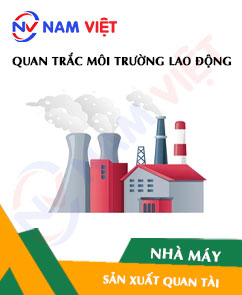
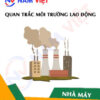
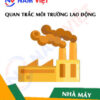

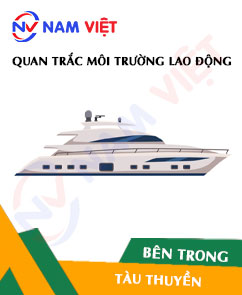
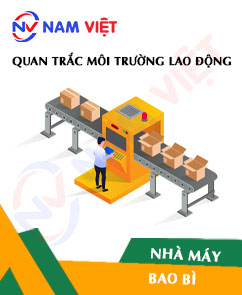
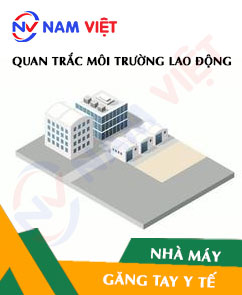
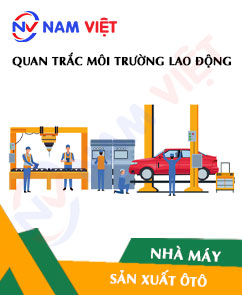



Review Occupational Environment Monitoring at the Coffin Manufacturing Plant
There are no reviews yet.